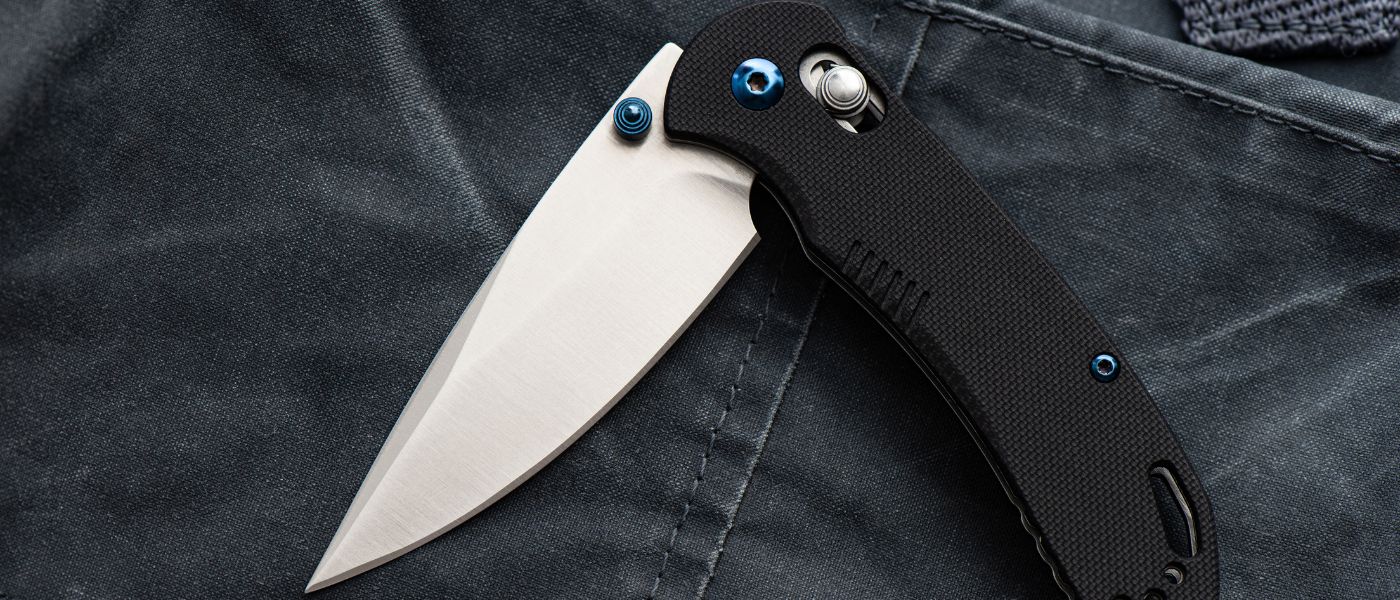Survivalists understand that preparation is key, and having the right tools on hand can make all the difference when venturing into the wilderness.
Of these tools, one of the most critical is the knife. However, not just any knife will do. Different types of knives are available to survivalists, each designed to serve a unique and helpful purpose.
Knives are more than just cutting tools. They are useful for a variety of tasks in the wilderness, from building shelters and preparing food to self-defense. As a survivalist, it’s important to have a selection of versatile and reliable knives.
Drop-Line Blades
A drop-line blade is a type of knife design where the blade’s spine slopes downward from the handle to the point. This design is common among hunting knives and popular with survivalists due to its strong point. The curved edge of a drop-line blade is ideal for slicing, which are common cuts in camping and survivalist activities.
The thickness of the blade near the tip makes it strong enough to withstand tough tasks, such as chopping wood or cutting through thick materials like rope. The balance and strength provided by drop-line blades make them ideal for outdoor enthusiasts.
Clip-Point Blades
The clip-point blade is another knife design distinguished by a concave or straight cut out at the top third of the blade’s back, creating a “clipped” point. The clip can be sharp or round, and the thin point provides control for detailed work and allows for quick, deep punctures when applied with force.
The clip-point blade offers versatility. It is excellent for precision tasks, like skinning game or carving wood. However, the thin point may not be durable enough for heavy-duty tasks. Despite this, the clip-point blade’s adaptability contributes to its popularity among survivalists.
Fixed Blades
Fixed-blade knives offer numerous benefits that make them a survivalist’s go-to choice. As the name suggests, these knives feature a solid, unbroken blade, providing superior strength and reliability over other types. A fixed-blade knife does not fold or slide, eliminating the risk of the blade collapsing during use.
The knife’s design allows users to leverage their full strength, making fixed blades ideal for heavy-duty tasks such as splitting wood, preparing food, or self-defense. Furthermore, the simplicity of the design means fewer moving parts, reducing the chances of mechanical failures.
Folding Knives
While large, fixed blades serve many purposes, bringing small folding knives on your adventures is just as important for survival situations. As the name implies, the blade of a folding knife folds into the handle, making it compact and safe to carry. This portability does not compromise their utility. They can serve a range of functions, including cooking, cutting, and skinning small game.
A folding knife has a unique locking mechanism that provides safety during use. It is this combination of portability, versatility, and safety that makes folding knives essential to your survivalist kit.
These are just a few different types of knives every survivalist should have before venturing into the wilderness. Upgrade your arsenal today to ensure safe, enjoyable outdoor trips!



